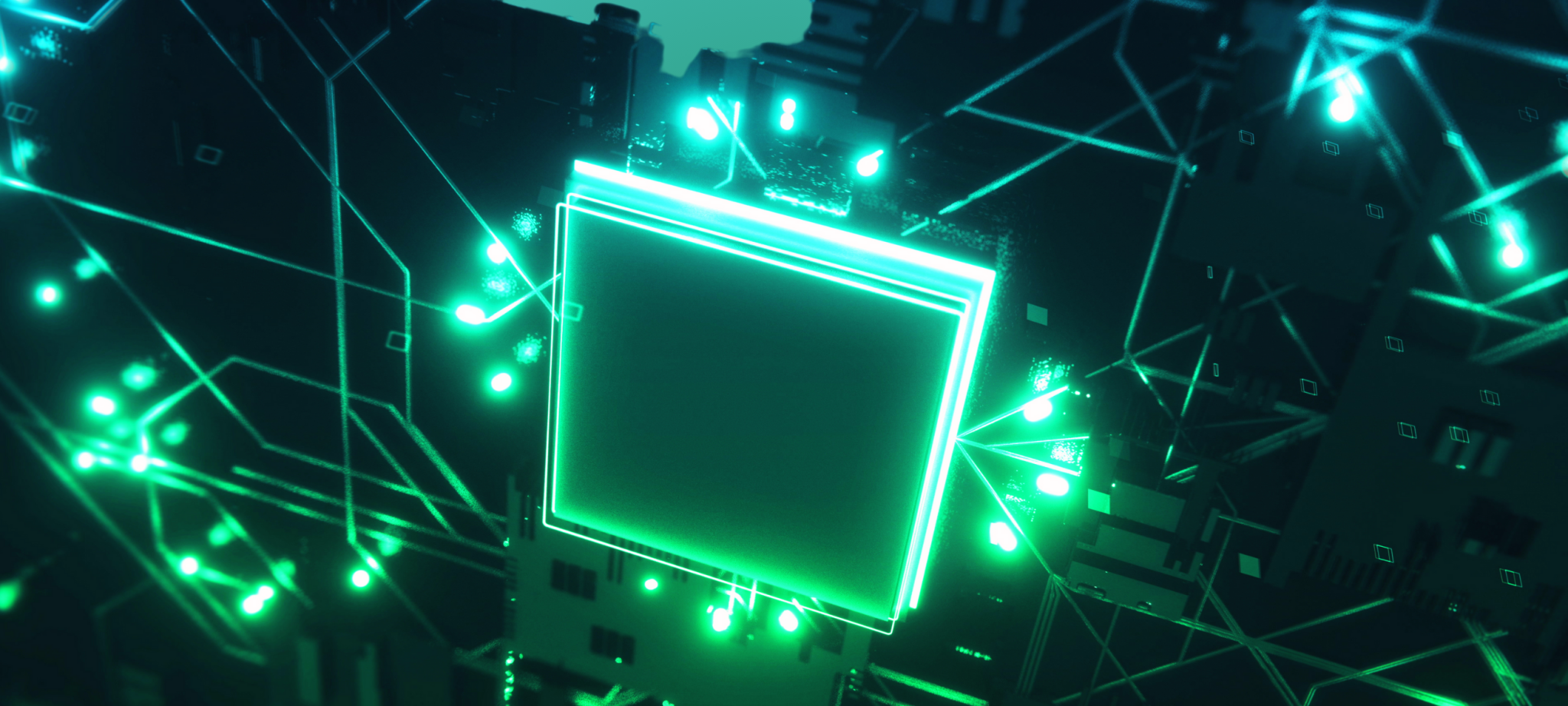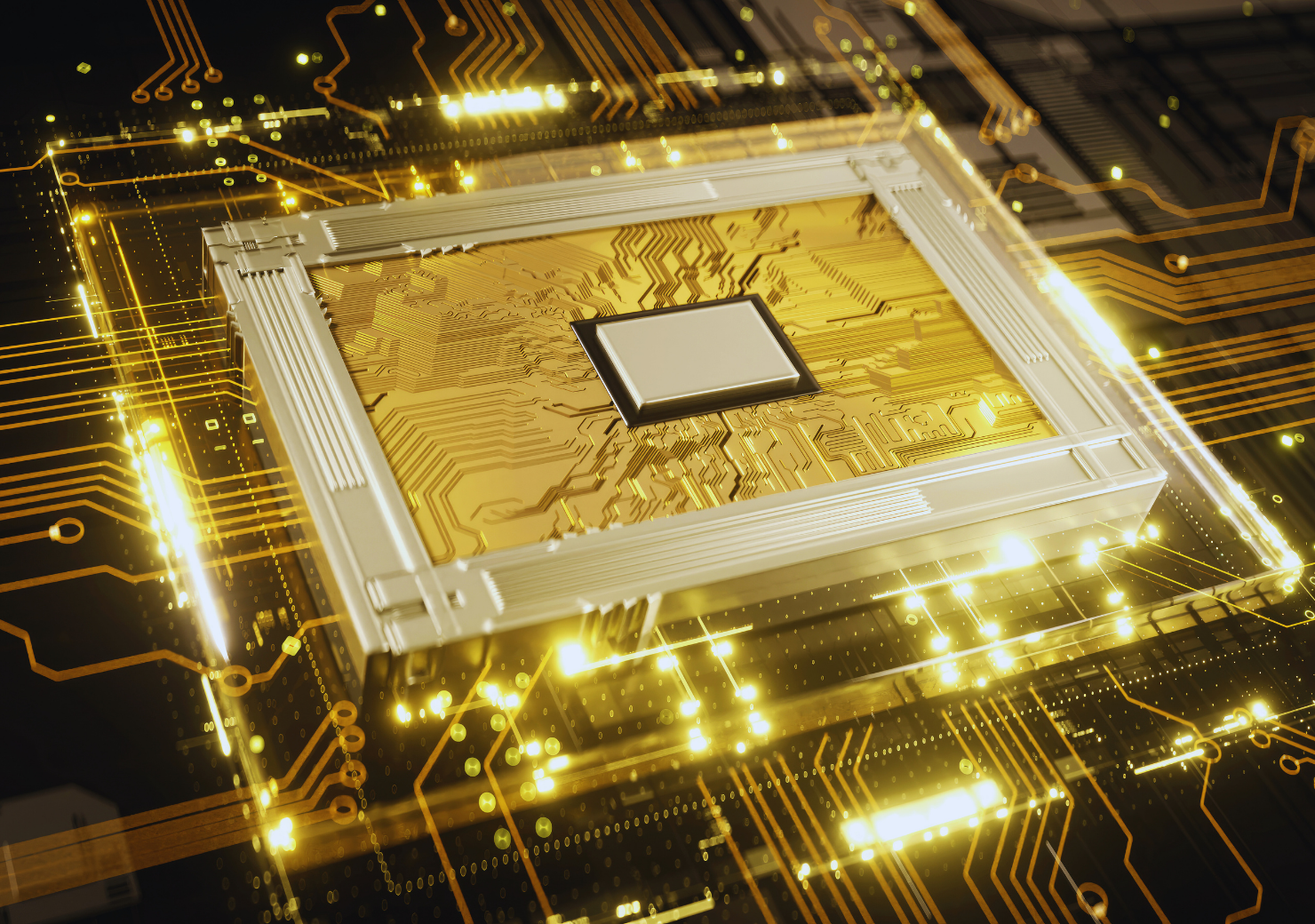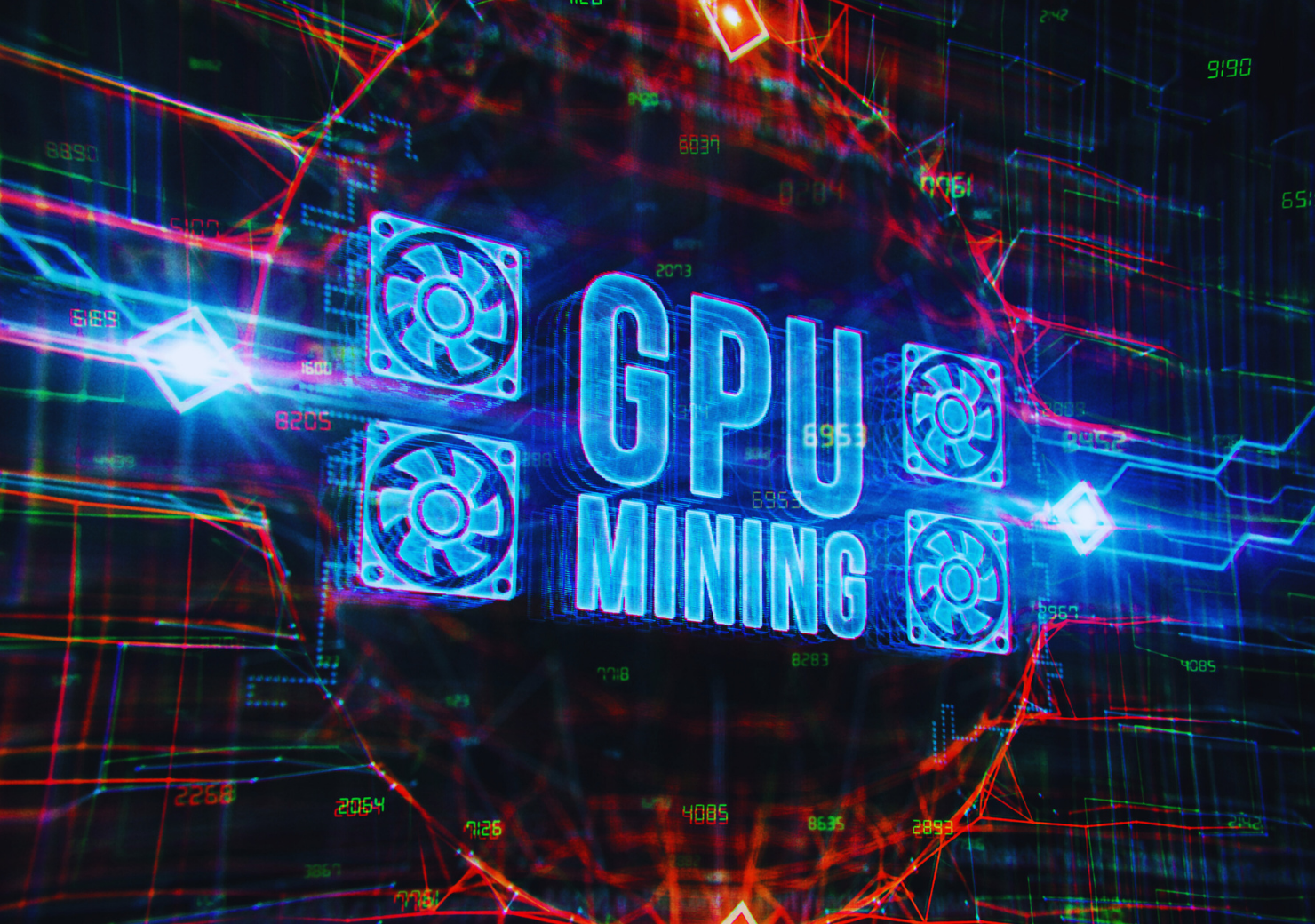A Graphics Processing Unit (GPU) is a specialized electronic circuit developed primarily to speed up the creation and rendering of images, animations, and videos for computer displays. Over time, GPUs have significantly evolved from handling just graphics-related tasks to becoming versatile processors capable of performing complex computations in fields such as scientific research, artificial intelligence (AI), and machine learning (ML). This article delves into the functions, architecture, and applications of GPUs, emphasizing their growing importance in modern computing.
What Is a GPU?
A GPU is an electronic circuit designed to process large amounts of data simultaneously. Initially created for video games and graphics applications, GPUs are now used in a broader range of tasks. Their capability to handle high-performance computing and parallel processing makes them invaluable in tasks beyond graphics production, extending into fields such as AI, data science, and scientific simulations.
What Is the Role of a GPU in Modern Computers?
In modern computers, the primary role of a GPU is to accelerate graphics-related tasks, relieving the Central Processing Unit (CPU) from these heavy workloads. Graphics processing requires intense calculations, and offloading these tasks to the GPU increases overall system performance. A GPU’s multi-core structure makes it ideal for parallel processing, while the CPU is optimized for sequential tasks. This division allows the GPU to excel in tasks such as image rendering and video processing.
How Have GPUs Revolutionized Gaming and Visual Effects?
GPUs have led to significant advancements in both gaming and visual effects. In gaming, GPUs enable real-time rendering of high-quality graphics, allowing for the creation of large, complex game worlds and providing a smooth, immersive experience for players. With advanced capabilities such as texture mapping and shading, GPUs ensure that games run at high resolutions and refresh rates, enhancing the overall gameplay experience.
Similarly, in the film industry, GPUs are crucial for producing advanced visual effects (VFX). Their processing power allows for realistic lighting, shadows, and detailed animations, transforming the production of movies and television into more complex and visually striking experiences.
Why Does Your Computer Need a GPU?
Computers require GPUs for intensive tasks such as graphic rendering, video editing, and 3D modeling. These tasks demand significant processing power, which a GPU provides through its parallel processing abilities. By handling these specific workloads, GPUs free up the CPU to manage other tasks more efficiently, improving overall system performance.
What Is the Difference Between a CPU and a GPU?
While both CPUs and GPUs are processors, they are designed for different purposes. A CPU is responsible for handling general-purpose tasks and managing the overall functionality of a computer. It has fewer but more powerful cores that are optimized for sequential processing, making it suitable for tasks like running operating systems and software applications. In contrast, a GPU consists of thousands of smaller cores designed for parallel processing, which allows it to handle multiple tasks simultaneously. This makes GPUs ideal for tasks that require high parallel computing power, such as graphics rendering, machine learning, and scientific computations.
The Role of GPUs in Artificial Intelligence and Machine Learning
GPUs play a pivotal role in artificial intelligence (AI) and machine learning (ML). These fields require processing massive datasets and training complex models, tasks that demand substantial computational power. With their ability to perform parallel operations, GPUs can process data far more efficiently than CPUs, significantly reducing the time required for training AI models and executing machine learning algorithms. As a result, GPUs are essential in advancing AI technologies such as natural language processing and autonomous vehicles.
From Gaming to Data Science: The Wide Applications of GPUs
In addition to gaming, GPUs have become instrumental in industries like data science, healthcare, and finance. In data science, GPUs are used to analyze vast datasets quickly and efficiently. For example, in healthcare, GPUs are utilized in medical imaging to process large volumes of data, enabling faster and more accurate diagnoses. In finance, GPUs power simulations and real-time market analysis, providing valuable insights for decision-making.
How Do GPUs Accelerate Complex Computational Tasks?
GPUs excel at accelerating tasks that require repetitive calculations across large datasets, such as scientific simulations and data analysis. Thanks to their parallel architecture, GPUs can handle these tasks much faster than CPUs, drastically reducing processing times in fields like weather forecasting, molecular modeling, and scientific research. By distributing computations across thousands of cores, GPUs are able to perform complex tasks more efficiently.

Exploring the Architecture of a Graphics Processing Unit
The architecture of a GPU is specifically designed to optimize parallel processing. Unlike a CPU, which has fewer but more powerful cores, a GPU contains thousands of smaller cores that can execute multiple tasks simultaneously. This makes GPUs highly efficient for graphics rendering, scientific computations, and data processing tasks. In addition, GPUs come equipped with dedicated memory known as video RAM (VRAM), which is optimized for handling large data sets required for tasks like image rendering and simulation.
Modern GPUs also feature specialized cores, such as tensor cores, which are designed to accelerate AI and deep learning tasks. This architecture allows GPUs to perform a wide range of tasks beyond just graphics processing.
The Future of GPUs: Technology and Performance Trends
The future of GPUs is closely tied to developments in AI, machine learning, and high-performance computing. As these fields continue to evolve, the demand for more powerful and efficient GPUs will grow. Technologies like ray tracing, which simulates real-time light behavior, and deep learning super sampling (DLSS), which enhances image quality in gaming, are already shaping the next generation of GPUs.
Additionally, cloud-based GPU services are gaining popularity, allowing users to access high-performance computing power without the need for expensive hardware. This trend is expected to continue, making GPU technology more accessible across various industries.
Which companies are using GPUs around the world?

GPUs are widely utilized across multiple industries globally, providing significant advancements in technology, gaming, healthcare, and more. The technology and AI sectors lead the way, accounting for around 20% of GPU usage, with companies such as NVIDIA, Google, and Facebook driving innovations in artificial intelligence, machine learning, and cloud computing. Gaming follows closely, representing 15%, where companies like Sony, Nintendo, and Tencent use GPUs to enhance graphic rendering and real-time gameplay. The automotive sector, notably with Tesla and Waymo, utilizes 10% of GPU power, especially in autonomous driving technologies. Other key sectors such as finance, healthcare, and scientific research each contribute around 10%, leveraging GPUs for data analytics, medical imaging, and high-performance computing tasks. Cloud services, film and animation, telecommunications, manufacturing, and cryptocurrency mining also benefit from GPU capabilities, albeit to a lesser extent. The pie chart illustrates the proportional distribution of GPU usage across these diverse sectors.

Many companies around the world use GPUs for various purposes, from powering AI and machine learning applications to enhancing gaming, content creation, and scientific research. Here’s a breakdown of key industries and notable companies leveraging GPUs globally:
Technology and AI Companies
- NVIDIA (USA): As a major designer and producer of GPUs, NVIDIA not only supplies GPUs but also uses them for internal AI research and cloud-based solutions.
- Google (USA): Google uses GPUs extensively for AI-driven applications such as Google Search, Google Photos, Google Cloud services, and TensorFlow (a popular machine learning framework).
- Microsoft (USA): Microsoft employs GPUs for its Azure cloud platform, enabling AI, machine learning, and large-scale data processing applications.
- Facebook (Meta) (USA): Facebook uses GPUs to power deep learning models for image recognition, natural language processing, and its metaverse ambitions.
- Amazon Web Services (AWS) (USA): AWS offers GPU-accelerated instances in its cloud platform, helping customers run AI, machine learning, and high-performance computing (HPC) tasks.
Gaming Companies
- Sony (Japan): Sony’s PlayStation consoles rely on high-end GPUs to deliver advanced graphics and immersive gaming experiences.
- Nintendo (Japan): Nintendo uses GPUs in its gaming consoles, such as the Switch, to render high-quality game environments.
- Tencent (China): Tencent, one of the largest gaming companies in the world, uses GPUs for both game development and cloud gaming services.
- Epic Games (USA): Epic Games uses GPUs to power its Unreal Engine, which is widely used for creating realistic 3D game environments and simulations.
Automotive and Autonomous Driving
- Tesla (USA): Tesla uses NVIDIA GPUs in its autopilot and full self-driving (FSD) systems, allowing its vehicles to process data from sensors in real-time for autonomous driving.
- Waymo (USA): Google’s Waymo uses GPUs for the development of its autonomous driving technology, processing large amounts of data to ensure safety and efficiency.
- BMW (Germany): BMW leverages GPUs for both in-car computing and manufacturing simulations, enhancing automation and efficiency in production.
- Baidu Apollo (China): Baidu’s Apollo project uses GPUs to develop its autonomous vehicle platform, which processes sensor data and powers AI-driven decision-making.
Finance and Banking
- JPMorgan Chase (USA): JPMorgan uses GPUs for high-frequency trading, real-time risk analysis, fraud detection, and financial modeling, enabling faster and more accurate data processing.
- Goldman Sachs (USA): Goldman Sachs leverages GPU-based computing to perform large-scale simulations, portfolio optimization, and market risk assessments.
- HSBC (UK): HSBC uses GPU-accelerated analytics to enhance financial forecasting and fraud prevention efforts across its global operations.
Healthcare and Biotech
- Siemens Healthineers (Germany): Siemens Healthineers uses GPUs for advanced medical imaging, enabling faster diagnostics and 3D rendering of complex medical scans.
- GE Healthcare (USA): GE Healthcare utilizes GPUs for its medical devices and imaging solutions, improving the speed and accuracy of MRI and CT scans.
- Illumina (USA): Illumina employs GPUs in genomic research and DNA sequencing, allowing faster processing of large genetic datasets.
- Roche (Switzerland): Roche uses GPUs for bioinformatics, accelerating drug discovery processes and personalized medicine approaches through data analysis.
Cloud and Data Center Providers
- Amazon Web Services (AWS) (USA): AWS provides GPU-powered cloud services that enable businesses to run machine learning models, video rendering, and high-performance computing (HPC) in the cloud.
- Microsoft Azure (USA): Azure offers GPU-based virtual machines for AI, ML, and big data processing, helping customers in various industries run compute-intensive tasks.
- Google Cloud (USA): Google Cloud offers GPU-powered services that support everything from data analytics to machine learning workloads.
- Alibaba Cloud (China): Alibaba provides GPU-powered cloud instances, supporting companies across China and globally with data processing and AI-powered applications.
Film, Animation, and Content Creation
- Pixar (USA): Pixar uses GPUs extensively for rendering animations and visual effects, producing high-quality animated films with enhanced realism and faster processing times.
- DreamWorks (USA): DreamWorks utilizes GPUs for rendering and simulation in animated movies, speeding up the production of 3D animations and CGI effects.
- Weta Digital (New Zealand): Known for its work in movies like “The Lord of the Rings” and “Avatar,” Weta Digital uses GPU farms to render highly detailed special effects and visual environments.
- Industrial Light & Magic (ILM) (USA): ILM uses GPUs to create cutting-edge visual effects in blockbuster films, enabling more realistic CGI and faster post-production processes.
Scientific Research and Supercomputing
- CERN (Switzerland): CERN uses GPUs to accelerate particle physics simulations and analyze massive datasets generated from experiments such as the Large Hadron Collider (LHC).
- NASA (USA): NASA leverages GPUs for space simulations, climate modeling, and data analysis in missions such as Mars exploration and satellite research.
- National Supercomputing Centers (China, USA, Europe): Various national supercomputing centers use GPUs in their high-performance computing clusters for scientific research, including climate simulations, astrophysics, and genomics.
- IBM (USA): IBM uses GPUs in its supercomputers for quantum computing research, AI, and deep learning models across industries.
Telecommunications and 5G
- Ericsson (Sweden): Ericsson uses GPUs in its 5G infrastructure to enhance signal processing, improve network efficiency, and handle large volumes of data in real-time.
- Qualcomm (USA): Qualcomm incorporates GPUs into its chipsets for mobile devices, enabling powerful graphics and AI capabilities in smartphones and other connected devices.
- Huawei (China): Huawei uses GPUs for telecom and 5G network optimization, as well as AI applications to improve network performance.
Manufacturing and Engineering
- Siemens (Germany): Siemens employs GPUs for product design simulations, computational fluid dynamics (CFD), and real-time engineering applications, enhancing its manufacturing processes.
- General Electric (GE) (USA): GE uses GPUs for industrial simulations, predictive maintenance, and optimizing the performance of complex machinery.
- Toyota (Japan): Toyota utilizes GPUs for autonomous driving research, car design, and engineering simulations to improve vehicle safety and performance.
Cryptocurrency Mining
- Bitmain (China): Bitmain uses GPUs in its cryptocurrency mining operations, particularly for mining altcoins like Ethereum. Although specialized ASICs are more commonly used for Bitcoin mining, GPUs are still widely employed in other cryptocurrencies.
- Riot Blockchain (USA): Riot Blockchain uses GPU-powered mining rigs to mine cryptocurrencies, leveraging their processing power for blockchain validation.
GPUs have evolved from being simple graphic rendering devices to becoming powerful processors capable of handling complex computational tasks across various industries. Their ability to process large datasets in parallel has made them essential in fields such as gaming, AI, machine learning, and scientific research. As technology continues to advance, GPUs will remain critical in shaping the future of computing, driving innovation in industries ranging from healthcare to entertainment.




